 W
WKurdish culture is a group of distinctive cultural traits practiced by Kurdish people. The Kurdish culture is a legacy from ancient peoples who shaped modern Kurds and their society.
 W
WBegzade (Kurdish), Beyzade (Turkic), and Begzadići (Slavic), Beizadea (Romanian), Begzadi (female) are titles given within the Ottoman Empire to provisional governors and military generals who are descendants of noble households and occupy important positions within the empire. The term "Beyzade" often appears in western accounts of the Ottoman Empire as superiors within the society, usually men who held a lot of authority. In Eastern Europe, Balkans, Caucasus, and some parts of Anatolia and Iraqi Kurdistan the title of Beyzade was given to Circassian princes who led parts of the Ottoman conquest in these regions.
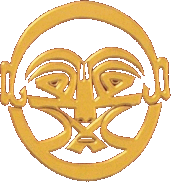 W
WA cemevi or cem evi (pronounced and sometimes written as djemevi; meaning literally "a house of gathering" in Turkish. It's a place of fundamental importance for Turkey's Alevi-Bektashiyyah tariqa populations. Certain Alevi organizations describe cemevis as places of worship, and ask for this to be officially recognized. However, the Directorate of Religious Affairs of Turkey doesn't recognise cemevis as Muslim places of worship, only Sunni and Ja'fari-Shi’ite mosques.
 W
WThe Coat of arms of Kurdistan Region is an eagle holding a sun on his wings and used by Kurdistan Region. The sun is formed of the three colors of red, yellow and green, which represent the Flag of Kurdistan.
 W
WDengbêj is a Kurdish music genre and/or a singer of the music genre Dengbêj. Dengbêjs are singing storytellers. There have been many terms to describe Dengbêjs throughout history, but today Dengbêj is the best known, and also several singing storytellers use Dengbêj as part of their (artistic) name. Dengbêjs are viewed as a way to transmit the traditions of their Kurdish ancestors in times as it was not possible to publish in Kurdish or about Kurdish history. Since there don't exist many documents about certain Kurdish events, today there exist attempts to analyze them through the songs of the Dengbêjs. They sing about the Kurdish geography, history, recent events, but also lullabies and love songs The Kilam is a speciality of the Dengbêjs, where they just let the out what moves them, and do not so much watch to make a pause after the end of a phrase. If they sing in the style of a stran, the song is more melodic and rhythmic, popular and love songs sung at weddings are sung in stran style. They sing mostly without instruments accompanying them. Traditionally Dengbêjs need to first learn the Dengbêj songs from the ancestors before performing their own songs. Well known Dengbêjs are Karapetê Xaço, Evdalê Zeynikî and Sakîro. In the 1980s the Dengbêjs were persecuted for singing in Kurdish as it was forbidden in Turkey to sing in Kurdish language. In 1991, Turgut Özal achieved that the use of the Kurdish language became legal except for broadcast, publications, education and in politics. Therefore, the Dengbêjs were again able to perform with more freedom. From 1994 onwards the Dengbêjs were supported by Kurdish politicians to attend festivals and TV shows out of Turkey and from the 2000s also inside Turkey. Therefore, the Dengbêj music became politicized and as a sign of Kurdishness, which confronted the Turkish nationalism.
 W
WThe Dicle Bridge is a historic bridge in Diyarbakır over the river Tigris in southeastern Turkey. Completed in 1065, it numbers ten arches with a total length of 178 m (584 ft). Hence, it is locally called also "On Gözlü Köprü" / "Pira Dehderî". Its another name is the Silvan Bridge due to its position being on the road to Silvan.
 W
WAt-Tariqah Al-Aliyyah Al-Qadiriyyah Al-Kasnazaniyyah is a Sufi order popular in Iraq and Iran, and a sub-order of the Qadiri order. It is the largest tariqah in Iraq, and is spread widely across neighbouring countries. Its spiritual lineage to the Islamic Prophet Muhammad passes through his cousin and son-in-law Ali Ibn Abi Talib. The present spiritual master of the Kasnazani order is As Sayyed As Shaikh Nehro Abdul Kareem Al-Kasnazani Al-Qadiri Al-Hussaini, a descendant of the Islamic Prophet Muhammad through the lineage of his grandson Imam Husain ibn Ali. The Kasnazani order makes no distinction between Sunni and Shia followers,.
 W
WThe Kurdish Academy is an institution mandated by the Kurdistan Regional Government, dealing with all issues related to Kurdish language within Iraq.
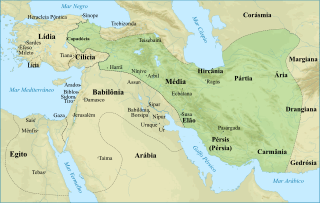 W
WThe Kurdish calendar is a calendar used in the Kurdistan region of Iraq alongside the Islamic and Gregorian calendar.
 W
WKurdish dance is a group of traditional hand-holding dances among Kurds. It is a form of a circle dance, with a single or a couple of figure dancers often added to the geometrical center of the dancing circle. According to the Encyclopedia of Islam, Kurds sing and dance in all of their festivals, birthdays, New Years, Newroz, marriage and other ceremonies.
 W
WThe Kurdish Heritage Institute is a non-governmental organization for preserving Kurdish heritage and music based in Sulaymaniyah, Iraq.
 W
WThis article briefly introduces a list of better known Kurdish historical sites. Apart from Kurdish historical sites within Kurdistan, non-Kurdish sites within Kurdistan, and Kurdish sites outside of Kurdistan are also included.
 W
WKurdish literature is literature written in the Kurdish languages. Literary Kurdish works have been written in each of the four main languages: Zaza, Gorani, Kurmanji and Sorani. Ali Hariri (1009-1079) is one of the first well-known poets who wrote in Kurdish. He was from the Hakkari region.
 W
WKurdish music refers to music performed in the Kurdish languages and Zaza-Gorani languages. The earliest study of Kurdish music was initiated by the renowned Armenian priest and composer Komitas in 1903, when he published his work "Chansons kurdes transcrites par le pere Komitas" which consisted of twelve Kurdish melodies which he had collected. The ethnic Armenian Karapetê Xaço also preserved many traditional Kurdish melodies throughout the 20th century by recording and performing them. In 1909, Scholar Isya Joseph published the work "Yezidi works" in which he documented the musical practice of the Yazidis including the role of the musician-like qawâl figures and the instruments used by the minority.
 W
WKurdish mythology is the collective term for the beliefs and practices of the culturally, ethnically or linguistically related group of ancient peoples who inhabited the Kurdistan mountains of northwestern Zagros, northern Mesopotamia and southeastern Anatolia. This includes their Indo-European pagan religion prior to them converting to Islam or Christianity, as well the local myths, legends and folklore that they produced after becoming Muslims.
 W
WKurdish rugs are rugs woven by the Kurdish people in the Middle East, predominantly the larger Kurdistan region including the Eastern part of Turkey near the Taurus Mountains, Northern Iraq, southernmost Caucasus, Armenia and North-Western Iran. When referring to Kurdish rugs within the rug industry, one is referring to those made within Iranian Kurdistan.
 W
WNasreddin or Nasreddin Hodja or Mullah Nasreddin Hooja or Mullah Nasruddin (1208-1285) was a Seljuq satirist, born in Hortu Village in Sivrihisar, Eskişehir Province, present-day Turkey and died in 13th century in Akşehir, near Konya, a capital of the Seljuk Sultanate of Rum, in today's Turkey. He is considered a philosopher, Sufi, and wise man, remembered for his funny stories and anecdotes. He appears in thousands of stories, sometimes witty, sometimes wise, but often, too, a fool or the butt of a joke. A Nasreddin story usually has a subtle humour and a pedagogic nature. The International Nasreddin Hodja festival is celebrated between 5 and 10 July in his hometown every year.
 W
WNewroz or Nawroz is the Kurdish celebration of Nowruz; the arrival of spring and new year in Kurdish culture. In Zoroastrian doctrine, fire is a symbol of light, goodness and purification. Angra Mainyu, the demonic anti-thesis of Zoroastrianism, was defied by Zoroastrians with a big fire every year, which symbolized their defiance of and hatred for evil and the arch-demon. In Kurdish legend, the holiday celebrates the deliverance of the Kurds from a tyrant, and it is seen as another way of demonstrating support for the Kurdish cause. The celebration coincides with the March equinox which usually falls on 21 March and is usually held between 18 and 24 March. The festival has an important place in terms of Kurdish identity for the majority of Kurds. Though celebrations vary, people generally gather together to welcome the coming of spring; they wear coloured clothes and dance together.
 W
WPeshmerga is a documentary film by the French intellectual Bernard-Henri Lévy. It was granted a late entry to the 2016 Cannes Film Festival as a special screening. It consists of a "close-up look" at the Peshmerga, the fighting force of the Kurds, battling to establish the state of Kurdistan across the existing states of Syria, Iraq, Iran, and Turkey.
 W
WReligious diversity has been a feature of Kurdistan for many centuries. Main religions that currently exist in Kurdistan are as follows: Islam, Christianity, Zoroastrianism, Yarsanism, Yazidism, Alevism, and Judaism. Today, Sunni Islam is the most adhered religion in Kurdistan.
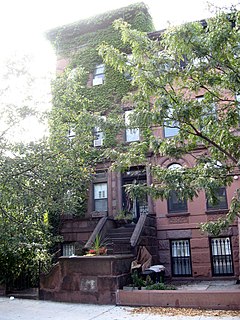 W
WVera Marion Beaudin Saeedpour was an American researcher and scholar who specialized in the study of Kurdish people. She founded the Kurdish Heritage Foundation of America, the first library and museum in the United States dedicated to the subject. The foundation was located in the Prospect Heights neighborhood of Brooklyn in New York City.
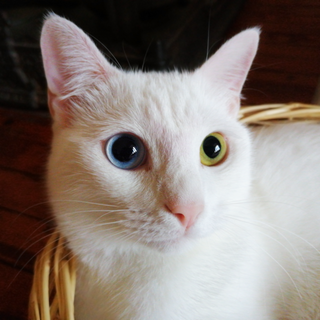 W
WVan cats are a distinctive landrace of the domestic cat found in the Lake Van region of eastern Turkey. They are relatively large, have a chalky white coat, sometimes with ruddy coloration on the head and hindquarters, and have blue or amber eyes or have heterochromia. The variety has been referred to as "the swimming cat", and has been observed to swim in Lake Van.
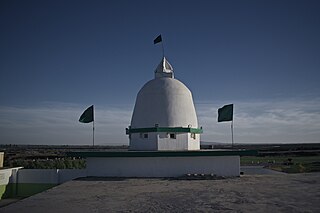 W
WThe Yarsan, Ahle Haqq or Kaka'i, is a syncretic religion founded by Sultan Sahak in the late 14th century in western Iran. The total number of Yarsanis is estimated at around 2,000,000 or 3,000,000. They are primarily found in western Iran and eastern Iraq and are mostly ethnic Goran Kurds, though there are also smaller groups of Turk, Persian, Luri, Azerbaijani and Arab adherents. Some Yarsanis in Iraq are called Kaka'i. Yarsanis say that some people call them disparagingly as "Ali-o-allahi" or "worshipers of Ali" which labels Yarsanis deny. Many Yarsanis hide their religion due to pressure of Iran's Islamic system, and there are no exact statistics of their population.
 W
WYazdânism, or the Cult of Angels, is a proposed pre-Islamic religion of the Kurds. The term was introduced and proposed by Kurdish and Belgian scholar Mehrdad Izady to represent what he considers the "original" religion of the Kurds.
 W
WZare is a 1926 Soviet Armenian drama film, directed by Hamo Beknazarian. Zare is the first Armenian film dedicated to Kurdish culture and was inspired by the text "Zare" written by Hakob Ghazaryan.